Visit Leuven in 2 days
19 must-see POIs, optimized routes and anecdotes.
Loading map...
You will visit the most beautiful points of interest in Leuven
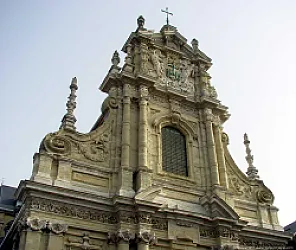
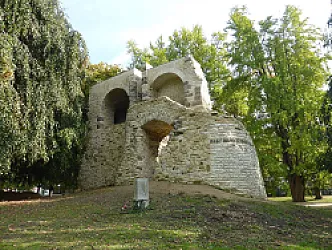

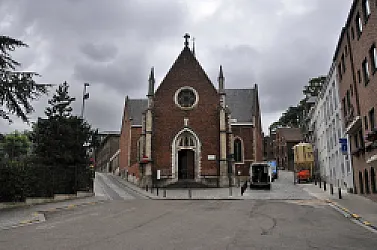


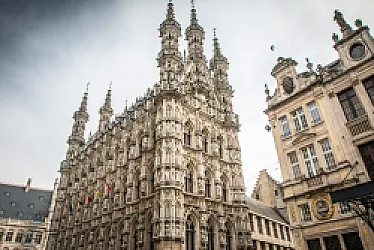











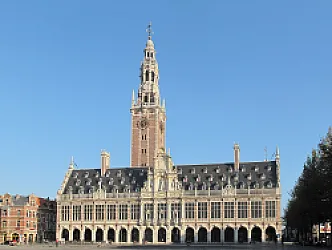
2 Days in Leuven — A Whirlwind of Gothic Beauty and Warm Beer Halls
Leuven stole my heart the moment I stepped into its cobbled squares. The city wears its history lightly and laughs loudly in cozy cafés. Known as the "City of Learning," Leuven feels alive with curiosity. Some say it's overrated, but they usually missed the quiet sunrise over the library tower. I first visited on a rainy afternoon and left promising to return, because Leuven has that rare mix of intimacy and grandeur.
Why visit? Because Leuven is more than a postcard. The streets hum with student chatter, bicyclists glide past ornate façades, and the smell of warm bread drifts from corner bakeries. You will see modern art sparking conversation at M-Museum, stand humbled beneath the vaulted ceiling of St. Peter's Church, and trace your fingers along the aged bricks of the Leuven University Library. This is a place where old stones meet vibrant street life. Expect surprising sculptures, centuries-old churches, and evenings spent tasting local beer while the bells chime.
Planning a trip here feels fun and daunting at once. There is so much to see that you could easily spend weeks exploring. I get that you might worry about fitting everything in if it’s your first time in Leuven. That’s exactly why I created this plan. Below, I'll show you a focused Leuven itinerary that hits top highlights without rushing. You’ll discover the best what to see in Leuven in two days, from landmark architecture to hidden corners.
Key tip: Start early on at least one morning. Museums and the famous library tower are calmer before lunch, and the light on the stonework is magical. This simple change saves time, avoids crowds, and gives you breathing room to savor moments. Pack comfortable shoes and a light rain layer—weather can change fast. Now let's dive into the itinerary!

Quick Mini Guide to Leuven
Where to stay:
- Base near Oude Markt for nightlife and cafés, or by Leuven Station for fast train access to Brussels.
- Choose a small guesthouse in the university quarter to feel the student atmosphere and short walks to museums.
When to visit:
- Late spring–early autumn for terrace weather; weekdays are quieter than lively weekend student crowds.
- Check opening times: M-Museum and some sites can close Mondays—plan museum days midweek.
Things to do:
- M-Museum: mix of contemporary shows and local Flemish works—reserve timed tickets for special exhibitions.
- Leuven University Library & tower on Ladeuzeplein: climb for views and see the WWI memorial rooms.
- St. Peter’s Church: don’t miss Dieric Bouts’ altarpiece; photograph the ornate Town Hall façade nearby.
- Find Fonske (the writing statue) by the library and stroll to Saint-Michael’s church to spot local stained glass.
- Book an interactive city game—Peter Pan LEUVEN or Saving Marsupilami! LEUVEN—for family-friendly, app-guided exploration.
Don't forget:
- Wear comfy shoes—Leuven is compact and best explored on foot or by rental bike.
- Carry a card for payments (Bancontact widely used) and check museum ticket times in advance.
Day 1 - Leuven
9 POIs to discoverDay 1 - Morning à Leuven
5 Points of interest - Duration : 3h30 - Distance : 1.3 km - Walking : 0h17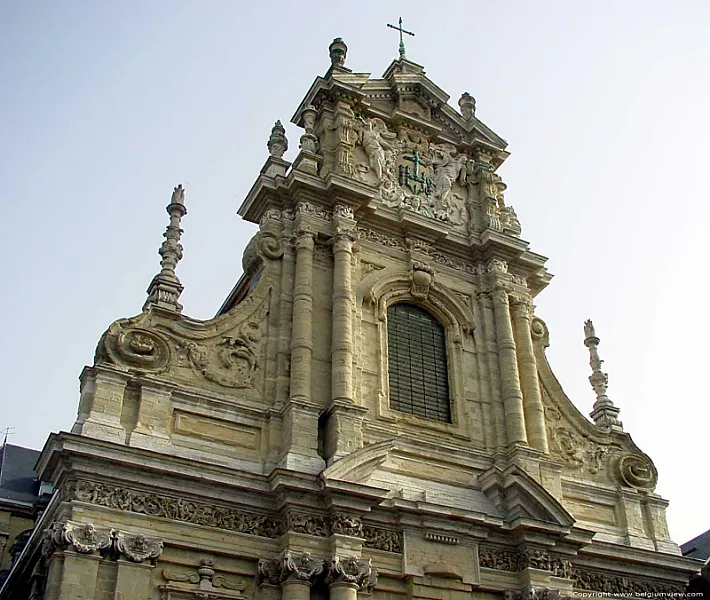
Saint-Michaels' church
- The Sint-Michielskerk is a baroque church designed by Father Willem Hesius and built between 1650-1671.
- The church's facade is considered its most important architectural element, with strong vertical columns and pilasters.
- The church is modeled after the Il Gesù in Rome, with a striking resemblance to an altar outside the church.
- There are three tombstones in the church, including those of Leonardus Lessius and the Van Horenbeeck sisters.
- The church has hosted the multidisciplinary cultural event "the twelve weeks of Sint-Michiel" from 2012-2012, showcasing various art forms.
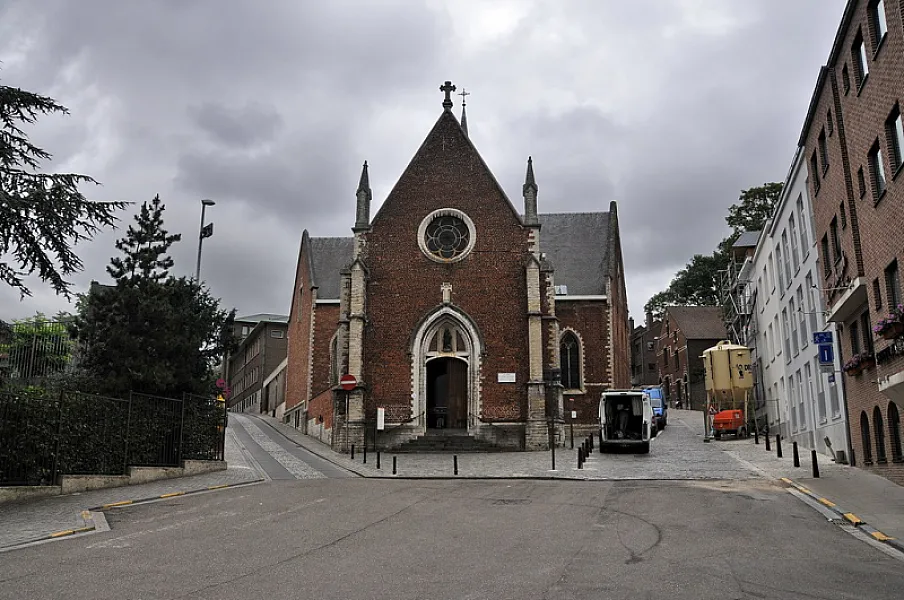
Pater Damiaanplein
- Rectangular and elongated, the square has historical connections to the Naamsestraat and the Dijle River through Boghe. Originally known as Ledige Plaats in the 13th century, it was a low-lying area.
- Other names include Pottekensmarkt and Sint-Antoniusplein.
- Renamed in 1936 after missionary Pater Damiaan, buried in the Sint-Antoniuskapel. In the 13th century, it housed a grain hall and later served as a livestock market.
- In 1813, the livestock market moved to Sint-Jacobsplein, and Pater Damiaanplein became known as Kiekenmarkt, focusing on poultry.

Sint-Kwintenspoort
- The Sint-Kwintensbinnenpoort, also known as the Sint-Kwintenspoort or Proefstraatpoort, was a city gate that was operational from the 12th century to 1754.
- It was an inner gate because a newer ring wall was built around the city in a broad circle from the 14th century onward.
- This gate historically divided a particularly high street into two: one central section and the other section leading up to the outermost ring wall.⏳ The Proefstraatpoort is older than the oldest ring wall and was built from iron stone, featuring two floors and a half-circle construction.
- The gate lost its significance in the 14th century when a larger ring wall was built, though it was restored multiple times before eventually decaying.
- In 1754, the city decided to demolish the ruination, and the stones were used for new constructions including the still-existing Calvary and the expansion of a college.
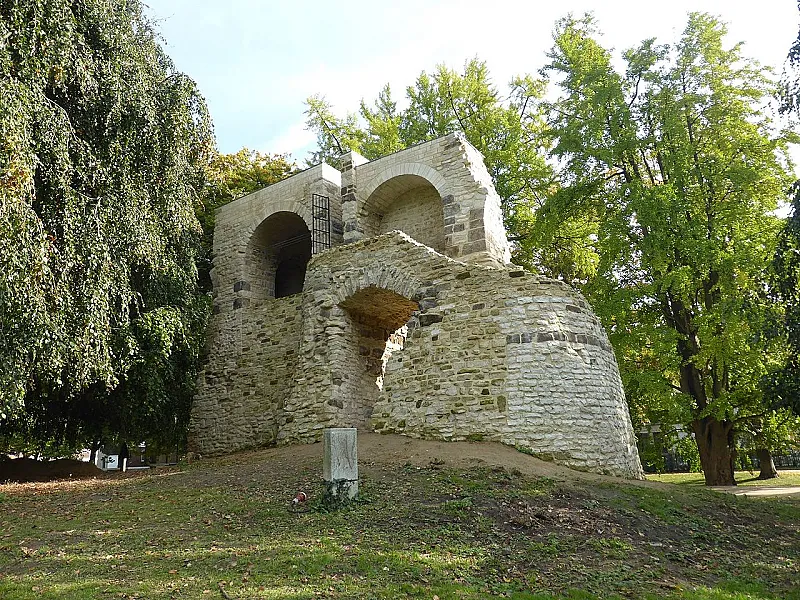
Sint-Donatus Park
- The park was laid out in English landscape style between 1869 and 1875.
- The park was reconstructed between 1993 and 1998.
- The park covers an area of approximately 2.4 acres.
- The park is known as the city park or the Gielenhof.
- The entrance gate to the former Van de Wynckele College is present.

Grand Beguinage
- The Grand Beguinage of Leuven, also known as Begijnhof Ten Hove, is a fully restored historic district covering approximately 3 hectares.
- The community for unmarried, semi-religious women was founded in the early 13th century, with the oldest written documents dating back to 1232.
- The Beguinage Church of St.
- John the Baptist is an early Gothic basilica with Romanesque elements and has a ridge turret instead of a tower.
- Most of the houses date from the period 1630-1670 and are built in the traditional architecture of the region, with some Baroque elements.
- The neighborhood in which the beguinage is located, Ten Hove, and the old name for the part on the left bank of the Dijle, Aborg, may indicate older habitation, perhaps the court of the first counts of Leuven.
Day 1 - Afternoon à Leuven
4 Points of interest - Duration : 2h45 - Distance : 0.7 km - Walking : 0h08
First Leuven site
- Leuven's first fortified wall, built of stone in the 12th century, was replaced in the 14th century by a second wall, but visible remains still remain.
- In the 12th century, the city prospered, forcing the construction of new stone fortifications.
- The second wall caused the abandonment of the first, but some remains were preserved, as the city rented towers and ramparts as warehouses.
- These remains were maintained by the municipal administration until the 18th century.
- The 2,700-meter-long wall had 31 towers and 11 stone gates.
- Six sites still preserve remains of Leuven's early city walls, including towers and wall fragments scattered around the city, such as Charles de Lorraine Street, Handbooghof, the university hospitals, the Jansenius and Juste Lipse towers, Redingen Street and Saint-Donat Park.
- Some of these remains have been listed as historical monuments since the 20th century.

Saint-Gertrude Church
- Founded in 1206 as an Augustinian priory, it was abolished in 1797.
- Between 1917 and 1968, the monastic buildings were used by Benedictine nuns as a study house and student residence.
- The priory was founded by Henry I, Duke of Brabant, in 1206.
- In 1252, the church of the priory received the dual function of parish church.
- Construction work was carried out under various abbots, and the abbey was abolished in 1797.
- In 1911, the site was bought by canon Armand Thiéry, converted for industrial purposes, then renovated to accommodate a museum of medieval architecture.
- Damaged during the 1944 bombing of Leuven, the buildings were renovated again between 1945 and 1953.
- Following the linguistic division of the Catholic University of Leuven in 1968, the Benedictines left the site.
- In 1978, the city of Leuven bought the site and turned it into residential property.

Vismarkt (fish market)
- The Vismarkt has been known since the 13th century as the oldest (fish) market in the city.
- It was originally a hub of trade and harbor activities, and was the home of fishermen due to its location on a former arm of the Dijle river.
- In 1236, the Order of Hermits of Saint Augustine settled near the Vismarkt and built a large monastery complex by 1265.
- After the Leuvense Vaart was opened in 1763, much of the harbor and trade activities moved, but the market function of the square with covered stalls remained.
- Parts of the Augustinian monastery, dissolved after the French Revolution, were sold in 1798 and replaced with new buildings, while others were converted into houses that still exist.
- The Vismarkt was a well-known nightlife district in the 20th century, until the Oude Markt took over in the 1970s, despite this, it hosted parts of the Marktrock festival.

Klein Begijnhof
- Le Petit Béguinage de Louvain is a residential area comprising one street and two cul-de-sacs.
- The beguinage is located to the north of St Geertrui Abbey.
- The Petit Béguinage was inhabited by beguines until the 19th century.
- The beguinage has no shared history with the Groot Begijnhof Leuven.
- The oldest known documents of the beguinage date back to 1272.
- Around half of the cottages in the beguinage were sold to private individuals in 2005.
Day 2 - Leuven
10 POIs to discoverDay 2 - Morning à Leuven
5 Points of interest - Duration : 3h45 - Distance : 1 km - Walking : 0h12Pope's College
- The College of the Pope, also known as the Pope Adrian VI College, was established in 1523 by Pope Adrian VI in Louvain, Belgium, as a theological college for needy students. It stands in close proximity to significant landmarks like the Louvain Town Hall and St.
- Michael's Church. Constructed in 1524, the college evolved with time, witnessing various expansions and reconstructions, including the addition of a chapel, library, and living quarters.
- Notably, Emperor Charles V stayed at the college in 1540, having been taught there in his youth. Over the years, it served various purposes from being a seminary, hospital, barracks, and even suffered from pillaging during historical events. Designated as a historical monument in 1973, the College of the Pope is recognized for its architectural significance, boasting a rectangular layout with a striking façade and an inner courtyard.
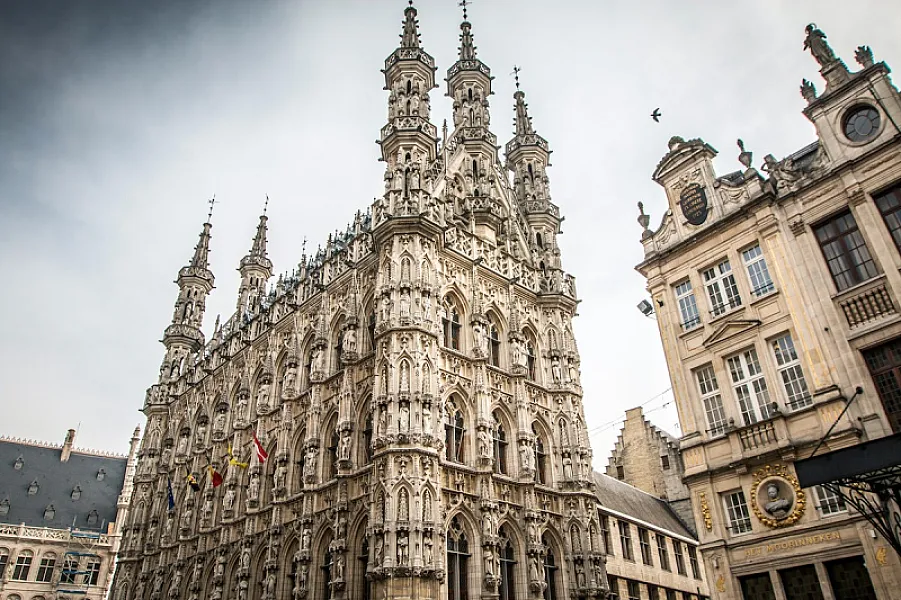
Leuven Town Hall
- The town hall of Leuven is one of the most famous Gothic town halls in the world.
- The plans for the town hall were inspired by the town hall of Bruges.
- The town hall has three floors and features decorative sculptures with biblical themes.
- It was built in two phases starting from 1439.
- It is now used only for ceremonies and events.
- The interior of the town hall is decorated in various styles, including Louis XIV, XV, and XVI.

Collegium Trilingue
- � The Trilingual College was founded in 1517 under the patronage of the humanist Hieronymus van Busleyden.
- It was located in Leuven, Belgium, and three languages could be studied there: Latin, Greek and Hebrew.
- The building included a chapel, auditorium, kitchen, library and rooms for students and professors.
- Despite difficult beginnings and conflicts with other faculties, Collegium Trilingue attracted many students and had considerable success in the 16th century.
- The college was never revived, despite attempts in the early 20th century and the 1970s.
- The buildings were used for other purposes.

Chapel of the Romanesque Door
- The construction began in 1261, showcasing dominant Romanesque architecture, and was classified in 1937.
- Historically, the oldest hospital in Louvain, founded around 1090, moved to its current location near the count's castle in 1220.
- The site's classification as a historical monument includes the Romanesque gate, remnants of the old hospital, and the former convent buildings.
- The XIII-century Romanesque portal stands out with detailed sculptural elements, including decorative columns, archivolts, and carved heads.
- The Gothic-style chapel, built in the 16th century, features three naves with ogival windows and a distinctive three-sided apse.

Joris Helleputteplein
- The Joris Helleputteplein features the subtle art installation 'Spoor' by Stief Desmet, consisting of bronze tractor tracks.
- It is named after Joris Helleputte, a founder of the Boerenbond and a Belgian architect-politician.
- The 'Spoor' artwork commemorates the agricultural heritage, eschewing a monumental sculpture for something integrated into the pavement.
- The square was established in the fall of 2010, transforming the former parking area of the Boerenbond's old headquarters.
- The area is part of a pedestrian zone within a historical city center, indicating an emphasis on foot traffic and historic preservation.
Day 2 - Afternoon à Leuven
5 Points of interest - Duration : 3h30 - Distance : 0.8 km - Walking : 0h11
M-Museum
- M Leuven is a museum located in downtown Leuven.
- The museum has its own collection of more than 52,000 works.
- M Leuven won the museum and audience award of the Flemish Museum Prize 2011.
- The museum is partially housed on the site of the former Vander Kelen-Mertens urban museum.
- M Leuven has a courtyard garden and a roof terrace where visitors can enjoy views of the city.
- The museum's permanent collection includes unique paintings from the late Gothic period and a sculpture collection.
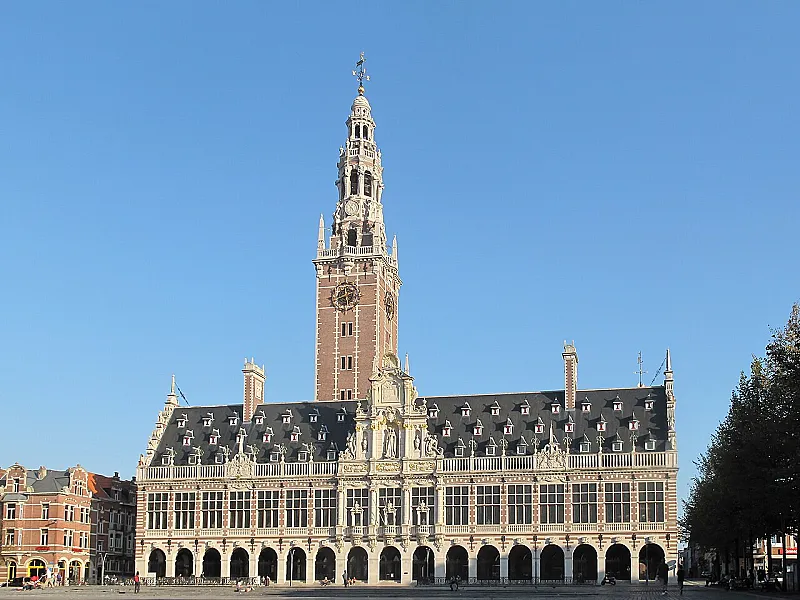
Leuven University Library
- The city of Leuven was the seat of three consecutive universities and several prestigious university libraries.
- The first official library of the university was established in 1636, thanks to Professor Rega, in the Lakenhalle (hall of drapes).
- In 1914, the library was destroyed by fire during the First World War, losing about 300,000 manuscripts and books.
- The older collections of books from the University of Leuven were already taken by the French government in 1797.
- Many books and valuable documents from the University of Leuven can be found in other European libraries.
- The University Library, located on the Mgr.
- Ladeuzeplein, was designed by Whitney Warren and built between 1921 and 1928.

Fonske
- Fonske, a sculpture in the center of the university town of Louvain, is formally known as Fons Sapientiae, meaning "source of wisdom" in Latin.
- The sculpture depicts a student reading a book with the mathematical formula for happiness while pouring liquid into their head, with a popular interpretation suggesting it's beer.
- Similar to the Manneken-Pis in Brussels, Fonske is regularly dressed by student associations during celebrations.
- In 1979, the French-speaking students moved the statue of Fonske to Louvain-la-Neuve and cemented it in the Wallons' square.
- In 2018, a small Fonske statue was gifted to Ottignies-Louvain-la-Neuve in remembrance of this incident.

St. Peter's Church
- The Church of Saint Peter is a Gothic Brabantian-style church constructed mainly in the 15th century.
- The original wooden church dates back to 986, replaced by a stone Romanesque church after a fire in 1176.
- The construction of the current Gothic building began around 1425 and continued for over 50 years.
- The church is part of a UNESCO World Heritage site due to its tower, which is part of a group of 56 Belgian and French towers.
- It was meant to have three colossal towers, but due to stability issues and lack of funds, the plan was abandoned in 1541, leaving the main tower incomplete.
- The church suffered severe damage in both World Wars, with fires and bombings causing destruction.
- Reconstruction efforts were made after the wars.
- Despite wartime devastation, the church houses valuable artworks, including paintings by Dirk Bouts, a stone tabernacle, a wooden pulpit, and various sculptures.
- There's a collection of sculptures, paintings, and metalwork housed in the church.

Old Market
- The Oude Markt is a rectangular square known as the "longest bar in the world" due to its numerous catering establishments.
- Dating back to 1150, the square was granted market rights and has historical significance as the city of the Counts of Leuven.
- Surrounded by historical buildings from the 18th century onwards, the square features landmarks like the University Hall and the Holy Trinity College's facade.
- Annual events, such as the Leuven fair, Student welcome, Hapje-Tapje (a gastronomical market), and the Beleuvenissen concerts, take place at the Oude Markt.
- A variety of historical buildings and their unique architecture can be observed in the gallery associated with the Oude Markt.
Where to Stay in Leuven
Location matters more than you might think for a two-day visit to Leuven: most of the city's highlights — the M-Museum, the Leuven University Library and the playful Fonske statue, along with Saint-Michaels' and St. Peter's churches — sit inside a compact, easily walkable centre. Choosing a base that keeps these sights within easy reach turns your trip into relaxed strolls between museums, cafés and historic squares instead of rushed taxi rides.
Leuven is organised around a tight historic core with the university quarter and Ladeuzeplein as its intellectual heart, the lively Oude Markt and Grote Markt squares as social hubs, and quieter residential districts just beyond. If you prefer to be in the thick of it, a room close to the university quarter or the Grote Markt puts the Library, Fonske and the churches a few minutes away on foot. For a calmer stay, neighborhoods slightly south or east — where tree-lined streets and local bakeries predominate — give a restful night while still allowing simple access to the centre.
For convenience and atmosphere, aim for the University Quarter when you want museum- and library-focused days: you’ll be able to pop back to your room between exhibitions or to rest before an evening on the Oude Markt. If you want evenings filled with terraces and local beer, an address near the Oude Markt is unbeatable. For a quieter, greener feel that’s still a short bike or bus ride away, look at nearby residential areas such as Heverlee or Kessel-Lo; they’re pleasant if you value space and parks after museum-hopping.
Transport in Leuven is simple: the city centre is eminently walkable, the train station sits a short walk from the heart of town and there’s an efficient bus network for slightly longer hops. Renting a bike for a day is both practical and very Leuven — many streets are bike-friendly, and cycling accelerates visits to outlying attractions. Taxis and ride apps are available but rarely necessary for a 48‑hour stay.
Finally, don’t overthink the perfect room — prioritise a reliable check-in, a central location that matches your energy level (buzzing Oude Markt or serene Heverlee), and a quiet-facing room if you’re sensitive to nightlife. With the right location strategy, Leuven becomes easy to savour: compact, charming and wonderfully manageable in just two days.
Getting Around Leuven
Leuven is delightfully compact, and that makes its public transport refreshingly easy to use even if you’re visiting for the first time. The city center is snug enough that many of the highlights cluster together, so you’ll switch naturally between walking, hopping on a bus, or catching a short train if you want to explore further. Local services are well signed and punctual, and with a bit of preparation you’ll feel confident moving from M-Museum to the University Library or popping over to the little bronze Fonske statue without stress.
Practicalities: buy your tickets before you travel or the moment you board. For buses, De Lijn sells single rides, day tickets and mobile tickets via its app, and validators are on board—inspectors do check, so keep your ticket handy 🎫. For trains to or from Leuven station use the SNCB/NMBS machines or the official app; contactless bank cards also work on many services. If you prefer plastic, carry change or a card because paying the driver with cash can be awkward on busy routes.
Google Maps is a terrific ally in Leuven: it shows walking times, bus numbers and real-time departures so you can plan a museum-to-library hop without guesswork. For trains, the SNCB/NMBS app sometimes provides quicker updates, but Google’s step-by-step directions are usually spot on within the city. If you’re juggling multiple stops, pin them in the app and follow the suggested route—transfers are straightforward and stops are well marked.
To save money, remember that Leuven is eminently walkable and bike-friendly, so many visitors combine walking with short shared-bike rides. The national scheme Blue-bike has docks here and is great for a quick cross-town trip at low cost. Buying a day pass on De Lijn can pay off if you plan several rides; for trains, book return fares in advance or check for regional promotions. Little choices add up: skipping a single bus or taking a 10-minute walk can stretch your travel budget further 🗺️.
On my first visit I stepped off the train at Leuven station, strolled 10 minutes to M-Museum, then walked across the bright Ladeuzeplein to the University Library—the Fonske statue makes an excellent mid-route photo stop. It took under 20 minutes of easy walking, and when my feet needed a break we rented a Blue-bike for the short return to the station. That simple loop convinced me: with a map, a ticket app and a relaxed pace, Leuven’s public transport makes exploring joyful and stress-free.
What to Pack for Leuven
I love Leuven’s compact, lived-in feeling: you can wander from Gothic churches to quirky sculptures in a single afternoon. For a 2-day trip focused on architecture and churches (lots of cobbles and narrow streets), pack light but smart. I once walked nearly 15 miles over two days here and learned that comfort, weather sense, and a few power/safety items make the difference between a dreamy weekend and sore feet plus drained batteries.
1. Comfortable walking shoes (required): I wore my Merrell Moab 2 hiking shoes—sturdy soles and good arch support—and after walking about 15 miles over two days around the Grote Markt and Oude Markt my feet were still fine. Leuven’s streets are mostly cobblestone and uneven, so cushioned, grippy shoes matter more than style. Blisters are a mood killer; bring what you trust.
2. Cross‑body bag: I keep a small cross‑body with a zip for coins and my phone; once I was in a crowded square watching a procession and the secure strap and hidden zipper made me relax instead of constantly checking my bag. It keeps your hands free for photos and maps and reduces pickpocket risk in busy spots.
3. Weather‑appropriate layers: Belgian weather flips fast—on one visit I was out for 10+ hours and went from sunshine to a sharp drizzle. Pack a light merino top, a thin insulating layer, and a packable rain jacket (or small umbrella). Layers let you enjoy long church visits and sudden showers without sweating or shivering.
4. EU/Type E power adapter (Belgium, 230V): Don’t be the person hunting for an adapter on day one. I once had to borrow one to charge my camera battery before an evening church visit. A small universal adapter that covers Type E sockets keeps phones, camera chargers, and travel hair tools working.
5. Power bank (10,000–20,000 mAh): I use a 10,000 mAh pack for daytime outings, but if you photograph architecture heavily or rely on maps, a 20,000 mAh saved me on a 10+ hour photo day. Leuven’s photo ops are endless—having enough juice kept me snapping until dusk.
6. Optional: compact rain jacket or travel umbrella + reusable water bottle: I always bring a foldable rain jacket and a 500 ml refillable bottle; it’s eco-friendly and handy when you’re exploring churches and need a quick sip. On a rainy afternoon near St. Peter’s Church the jacket saved the day and the water bottle saved money.
Enjoy Your Trip to Leuven!
Over two lively days you'll explore 19 must-see spots in Leuven, packed with art, history and architecture. From the contemporary displays at M-Museum to the soaring stacks of the Leuven University Library and the playful Fonske statue, this itinerary gives you everything you need to taste the city’s culture, historic landmarks and hidden corners—fast-paced but full of joy.
Remember, this is a GUIDE, not a rigid schedule: wander how you like and leave room for the unexpected. Some of the most memorable moments in Leuven happen when you get pleasantly lost between Gothic façades, stumble upon a quiet church square, or stop for an impromptu café break. Don’t pressure yourself to tick every box; the city rewards curiosity and slow, spontaneous discoveries.
I hope you feel excited—I’m genuinely thrilled for you! You’re going to have an amazing time exploring M-Museum’s galleries, admiring the Library’s grandeur and finding the charm of Fonske. Embrace each moment, chat with locals, and collect unforgettable memories that will make Leuven glow in your stories.
Want to explore in a playful way? Try Coddy’s gamified tours—Peter Pan LEUVEN and Saving Marsupilami! LEUVEN—perfect for turning your city wander into an interactive treasure hunt. Check out our Coddy tours for family-friendly puzzles, local trivia and a fresh, fun route through Leuven’s streets.
Have fun! If you want tips or want to share discoveries, write me—I'll love hearing from you and seeing your photos. Safe travels!
Want more adventure?
Discover our urban escape games to transform your visit into an interactive adventure!

















